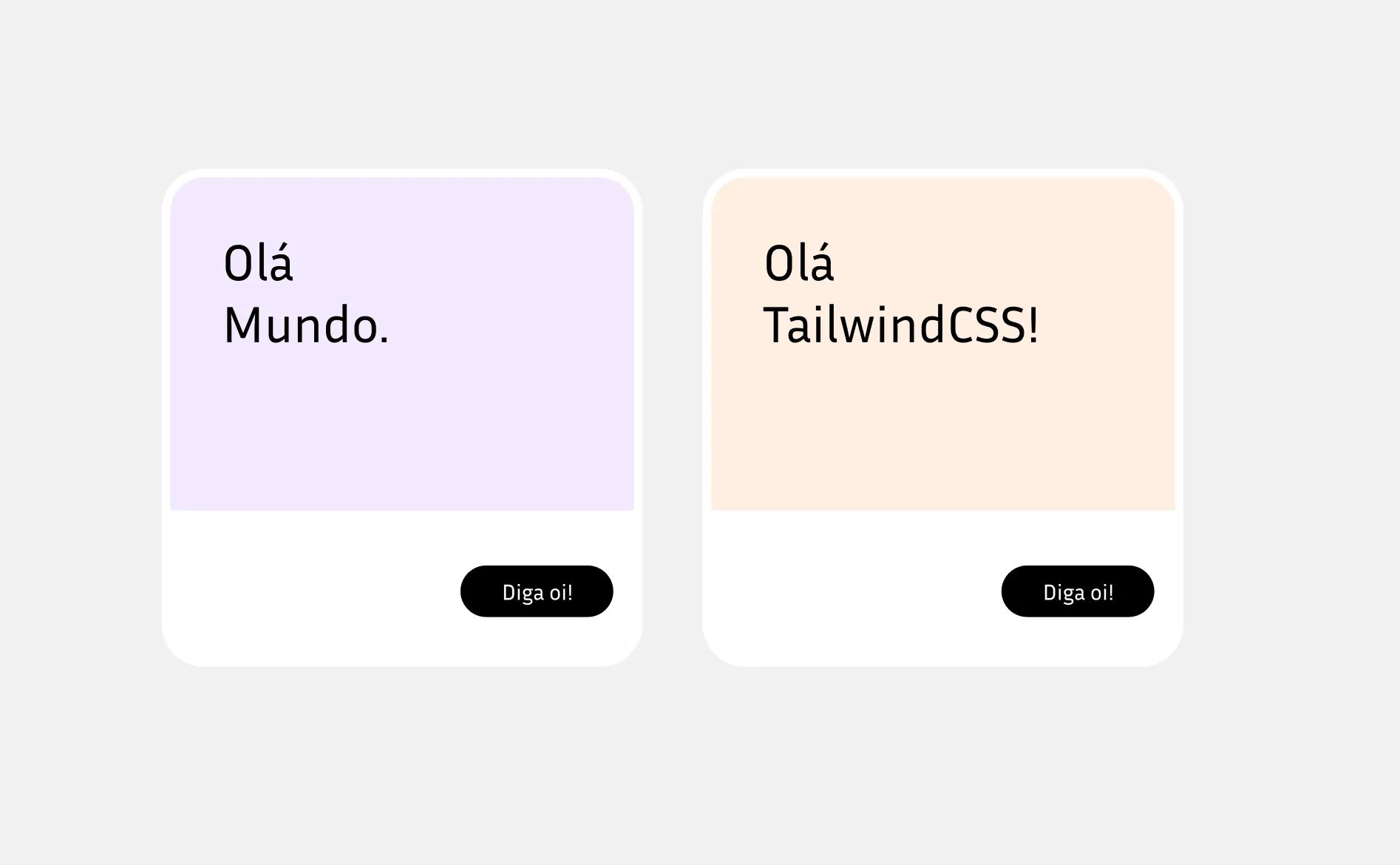Tailwind Playground
Podemos explorar de forma inicial o Tailwind usando o Tailwind Playground:
Podemos começar por lá a entender como é que funciona esse novo framework.
Exercício 01
Crie dois cards iguais aos que estão na imagem abaixo. Vamos usar, nesse momento, apenas o Tailwind Playground, ok?
Se preferir, o Figma está aqui nesse link

E, se não souber como fazer, tudo bem. A gente ainda nem começou praticamente o workshop. Vamos resolver juntos. A ideia desse exercício é apenas você entender mais ou menos o “fluxo” de código do TailwindCSS.
Resolução - Exercício 01
O legal do Playground também é que o código é compartilhável pela URL, então podemos enviar para qualquer pessoa aquilo que prototipamos simplesmente copiando a URL.
A resolução está neste link.
Se você preferir código:
<div class="flex min-h-screen items-center justify-center gap-10 bg-gray-50 font-display"> <div class="rounded-xl bg-white shadow-lg"> <div class="m-3 h-40 w-3xs rounded bg-purple-100 p-6 text-left"> <h2 class="text-2xl text-gray-700"> Olá <br /> mundo. </h2> </div> <footer class="px-3 py-4 text-right"> <button class="rounded-full bg-black px-4 py-1 text-xs text-white">Diga oi!</button> </footer> </div> <div class="rounded-xl bg-white shadow-lg"> <div class="m-3 h-40 w-3xs rounded bg-orange-100 p-6 text-left"> <h2 class="text-2xl"> Olá <br /> TailwindCSS </h2> </div> <footer class="px-3 py-4 text-right"> <button class="rounded-full bg-black px-4 py-1 text-xs text-white">Diga oi!</button> </footer> </div> <div></div></div>@import url("https://fonts.googleapis.com/css2?family=Inria+Sans:ital,wght@0,300;0,400;0,700;1,300;1,400;1,700&display=swap");
@import "tailwindcss";
@theme { --font-display: "Inria Sans", cursive;}